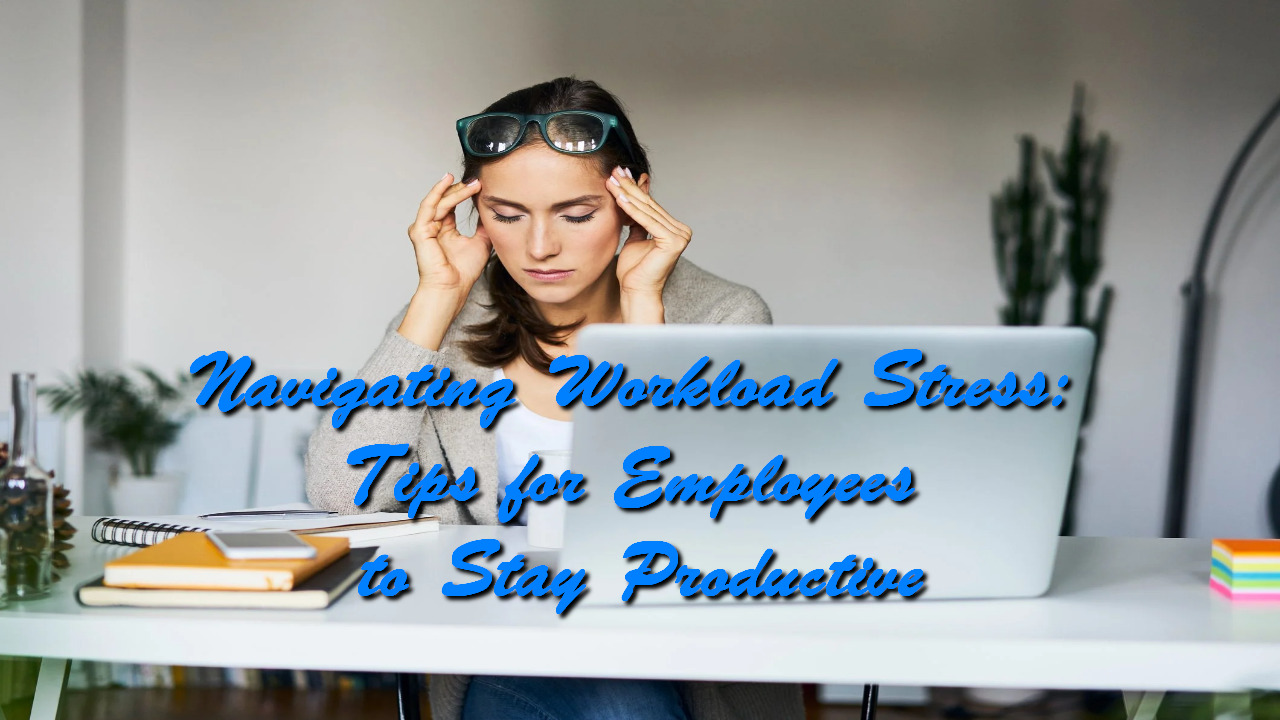In the fast-paced world of today’s professional landscape, employees often find themselves grappling with an overwhelming workload that can lead to high levels of stress and burnout. Balancing numerous tasks, deadlines, and responsibilities can be a daunting challenge, but there are effective strategies that employees can employ to manage workload stress and maintain productivity.
Prioritize and Organize

The foundation of tackling workload stress lies in effective prioritization and organization. Start by creating a comprehensive to-do list that outlines all your tasks and responsibilities. Once you have a clear overview of what needs to be accomplished, categorize tasks based on their urgency and importance. Give thought to employing the Eisenhower Matrix, a tool that categorizes tasks into four distinct groups: tasks that are both urgent and important such as processing fast paycheck stubs; tasks that are important but lack urgency; tasks that are urgent but not important, and tasks that are neither urgent nor important. By prioritizing tasks found within the “urgent and important” quadrant, you can channel your energy into high-priority undertakings and alleviate the pressure stemming from an overwhelming workload.
Time Management Techniques
Adopting proven time management techniques can significantly enhance your productivity and help alleviate workload stress. The Pomodoro Technique, for instance, involves breaking work into short, focused intervals (usually 25 minutes) followed by a brief break. This approach can prevent burnout and maintain your mental clarity throughout the day. Similarly, the “Eat the Frog” method encourages tackling the most challenging task first thing in the morning, setting a positive tone for the rest of the day. By managing your time effectively, you can accomplish more in less time and reduce the anxiety associated with an extensive workload.
Open Communication and Boundaries

One of the primary sources of workload stress is an inability to communicate about overwhelming tasks or an unrealistic workload. It’s essential to maintain open lines of communication with your supervisors or managers. If you find yourself consistently struggling to manage your workload, discussing your concerns with your superiors can lead to constructive solutions, such as delegation or adjusting deadlines. Additionally, setting boundaries is crucial to prevent burnout. Establish specific work hours and avoid constantly checking emails or work-related messages outside those hours. Creating a clear separation between work and personal time can help alleviate stress and maintain a healthier work-life balance.
Self-Care and Wellbeing
Amidst the chaos of a demanding workload, employees often neglect their own well-being. However, prioritizing self-care is pivotal in combating workload stress. Regular exercise, sufficient sleep, and a balanced diet contribute to improved focus, energy levels, and overall mental resilience. Incorporating mindfulness practices, such as meditation or deep breathing exercises, can help manage stress and anxiety. Remember that breaks during the workday are not a luxury but a necessity. Taking short breaks to stretch, walk, or engage in a non-work-related activity can rejuvenate your mind and increase your overall productivity.
In conclusion, managing workload stress requires a combination of strategic approaches and a proactive mindset. By prioritizing tasks, implementing effective time management techniques, maintaining open communication, and prioritizing self-care, employees can navigate the challenges of a heavy workload while sustaining their productivity and mental well-being. It’s essential to recognize that stress is a normal part of professional life, but with the right tools and strategies, it can be managed effectively to ensure a fulfilling and successful career journey.
